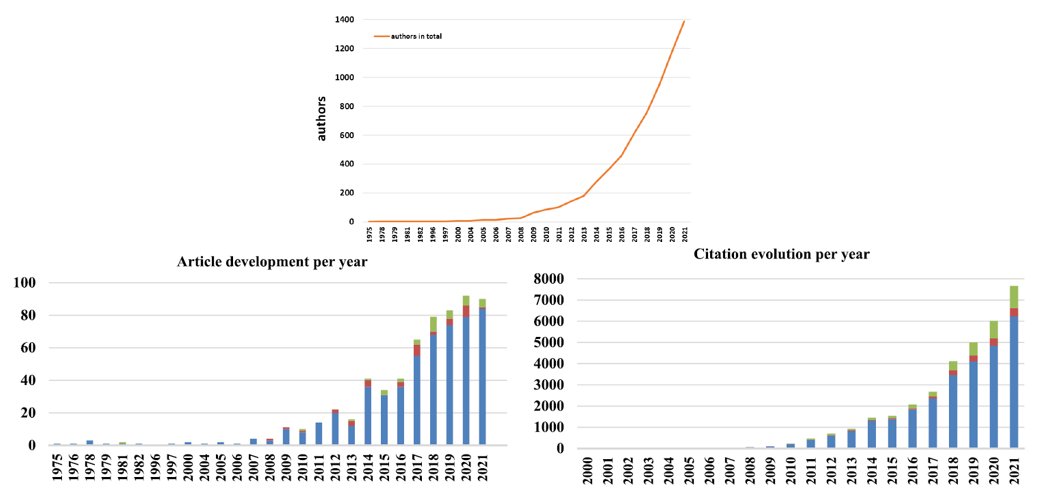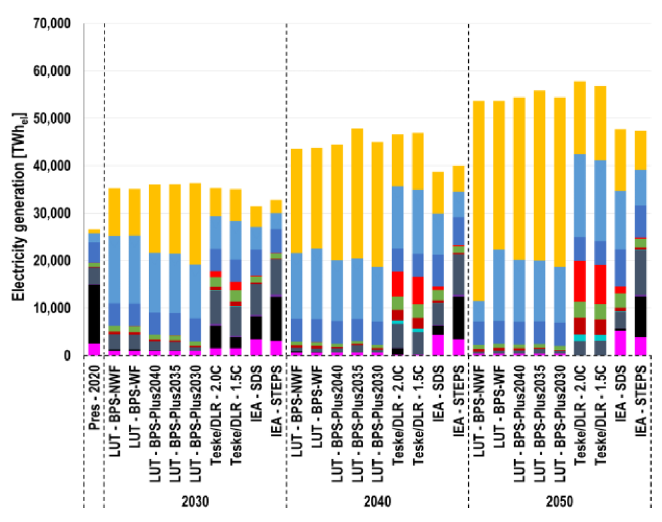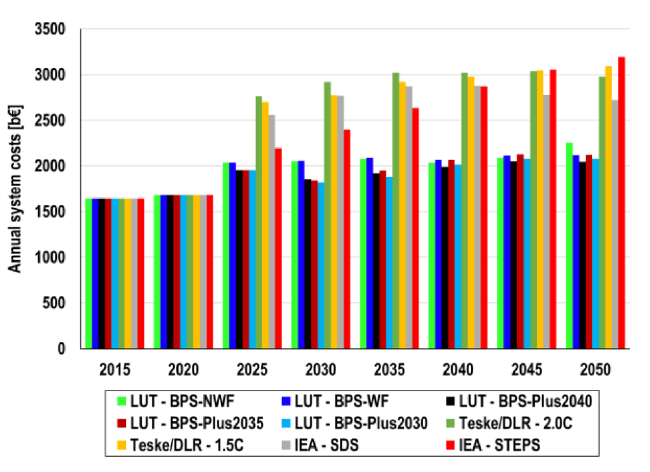1/ New research @UniLUT @KeinerDominik doi.org/10.1016/j.apen… investigates the role of #hydrogen in on- and off-grid residential solar PV prosumer systems as seasonal storage option in cost-optimised micro sector-coupling systems until 2050. 

2/ Power, heat, transportation segments are modelled and analysed in 8 scenarios varying the availability of grid connection and cars in the system, compared to a 9th grid-only scenario. Cost-optimised solution found via linear optimisation of #LUTprosume model. 

3/ Modelling of small-scale water electrolyser and fuel cell economic input data based on growth rates, learning rates and scaling of size. Capex strongly depends on device capacity and is usually high for small-scale applications. 

4/ Core results show limited application case for hydrogen storage system. Mainly Northern regions found suitable for hydrogen seasonal storage use if no grid connection is available. No single case found for on-grid scenarios with beneficial hydrogen system use. 

5/ Self-consumption ratio especially in off-grid scenarios is low, as highly oversized cheap solar PV capacity with battery storage is a more cost-effective solution in most regions. 

6/ Higher self-consumption found for on-grid scenarios; balancing via grid more cost-effective and solar PV capacities can be kept smaller. Self-consumption for on-grid w/o hydrogen confirming earlier research: sciencedirect.com/science/articl…
7/ Similar to the global overview, comparable results have been found for the #German case, in particular, for single-family houses and tenements: journals.aau.dk/index.php/sepm…
8/ Least cost battery capacity (in kWh) per least cost solar PV capacity (in kW) up to a factor of 4 if standard EV used in off-grid; on-grid factor of up to 1.8 sufficient; with standard EV at least 5 kWh in all regions in 2050. 

9/ One issue for PEM: #iridium based on 0.04-0.12 kWel #electrolyser and #FuelCell per kWp PV, 400-1200 GWel electrolyser and fuel cell capacity can be estimated by 2050 if all 9970 GWp prosumer PV would be equipped. Ca 1000 GWel can be produced, if 50% of potential is used.
10/ Conclusion: #Hydrogen in residential micro sector coupling beneficial for off-grid niches; least cost system with solar PV + battery achievable even off-grid; seasonal balancing via grid more beneficial; high FLH for electrolyser and fuel cell indicate inflexible operation.
@JeroAhola @AnttiJKosonen @PetteriLaakson4 @solarpapst @Stefan_Hajek @iain_staffell @energy_charts @VQuaschning @fuerstenwerth @pvmagazine @serendipv_eu @SolarPowerEU @sunnybloke @ProfStrachan @mzjacobson @kei_sakurai @BecquerelForPV @LUND_ENERGY @prof_sterner @Ma_Deutsch
• • •
Missing some Tweet in this thread? You can try to
force a refresh

 Read on Twitter
Read on Twitter














